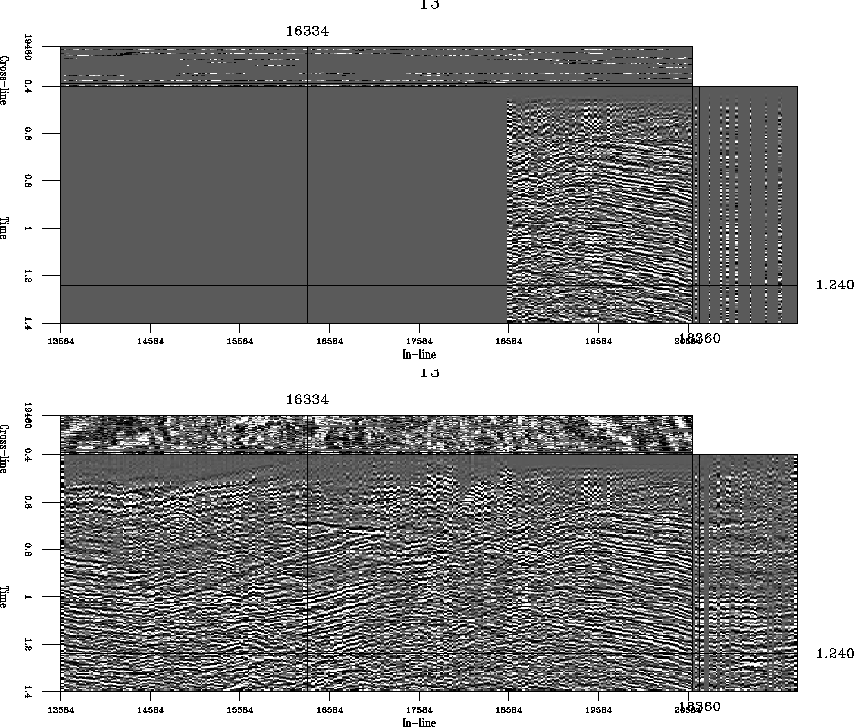
Similarly to the case of 3-D plane-wave destruction, where the regularization operator is constructed from two orthogonal two-dimensional filters, 3-D differential offset continuation amounts to applying two differential filters, operating on the in-line and cross-line projections of the offset and midpoint coordinates. The corresponding system of differential equations has the form
 |
(132) |
The result of a 3-D data regularization test is shown in
Figure ![[*]](http://sepwww.stanford.edu/latex2html/cross_ref_motif.gif) . The input data cube corresponds to the one in
Figure
. The input data cube corresponds to the one in
Figure ![[*]](http://sepwww.stanford.edu/latex2html/cross_ref_motif.gif) . I used neighboring offsets in the in-line
and cross-line directions and the differential 3-D offset continuation
to reconstruct the empty traces. Although the reconstruction appears
less accurate than the plane-wave regularization result of
Figure
. I used neighboring offsets in the in-line
and cross-line directions and the differential 3-D offset continuation
to reconstruct the empty traces. Although the reconstruction appears
less accurate than the plane-wave regularization result of
Figure ![[*]](http://sepwww.stanford.edu/latex2html/cross_ref_motif.gif) , it successfully fulfills the following
goals:
, it successfully fulfills the following
goals:
![[*]](http://sepwww.stanford.edu/latex2html/cross_ref_motif.gif) in
comparison with Figure
in
comparison with Figure ![[*]](http://sepwww.stanford.edu/latex2html/cross_ref_motif.gif) is partially caused by using
a simplified missing data interpolation scheme instead of a more
accurate regularization approach. It also indicates a possibility of
combining offset continuation with midpoint-space plane-wave
destruction for achieving an optimal accuracy.
is partially caused by using
a simplified missing data interpolation scheme instead of a more
accurate regularization approach. It also indicates a possibility of
combining offset continuation with midpoint-space plane-wave
destruction for achieving an optimal accuracy.
 |
In the next section, I return to the 2-D case to consider an important problem of shot gather interpolation.